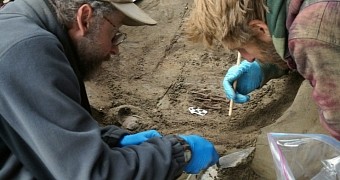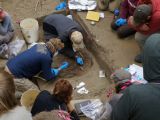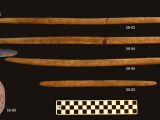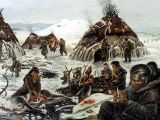This November 11, researchers with the University of Alaska Fairbanks announced the discovery of the remains of two children who lived and died in the Ice Age at an archaeological site in Alaska.
The remains, described in a paper in the journal Proceedings of the National Academy of Sciences, are estimated to be about 11,000 years old.
Interestingly enough, specialists say that these two corpses represent the youngest human remains dating back to the Ice Age to have ever been discovered anywhere in North America.
How the remains were discovered
The University of Alaska Fairbanks archaeologists who carried out this investigation say that the site that yielded the remains of these two Ice Age children produced the body of yet another child several years ago.
More precisely, the researchers explain that it was back in 2010 when specialists excavating the Upward Sun River site close to central Alaska's Tanana River came across the bodily remains of another child who also lived in the Ice Age and who passed away at the age of 3.
Having returned to the area, researchers got busy digging a little deeper and, in the fall of 2013, stumbled upon the remains of two other infants. The bodies were found in a burial pit at a depth of 15 inches (38 centimeters) below the level where the first body was discovered.
It is understood that, of these two infants, one passed away just a few weeks after being born. The other is said to have died while still in its mother's womb. It is believed that they were killed by food shortage and the harsh conditions their community lived in.
Funeral practices in the Ice Age
While excavating the Upward Sun River archaeological site, researchers found not just the 11,000-year-old bodies of these infants, but also several items that appear to have been put in the ground together with the corpses. Specialists say these objects served as burial offerings.
Writing in the journal Proceedings of the National Academy of Sciences, archaeologists detail that these burial offerings comprised shaped stone points and accompanying antler foreshafts. Together, the stone points and the foreshafts formed weapons used for hunting.
By the looks of it, somebody even went through the trouble to decorate the foreshafts by carving abstract lines into their body. This indicates that the people who inhabited North America during the Ice Age were no strangers to art.
Apart from these artifacts, fish and ground squirrel remains were also retrieved from the burial pit that accommodated for the bodies of the two infants for millennia. This find suggests that the children were left behind by a community of hunter-gatherers that lived at this site during summer, probably from June until August.
Commenting on the discovery of these bodies and the accompanying artifacts and animal remains, researcher Ben Potter said, “Taken collectively, these burials and cremation reflect complex behaviors related to death among the early inhabitants of North America.”

 14 DAY TRIAL //
14 DAY TRIAL // 



